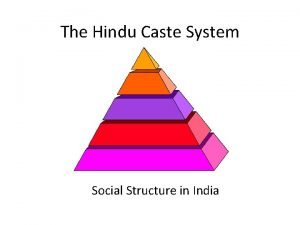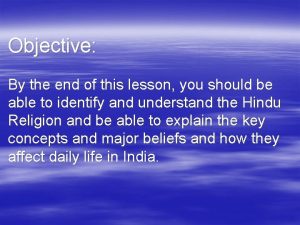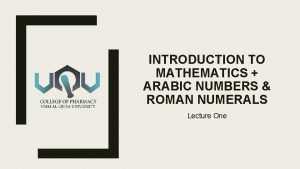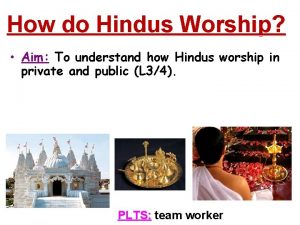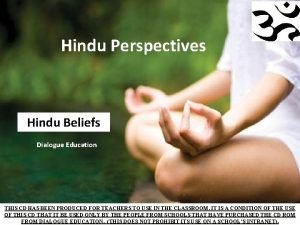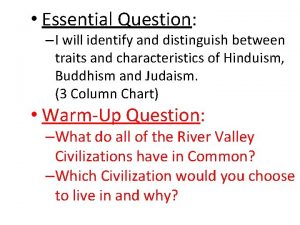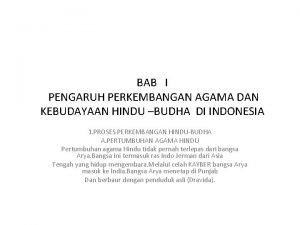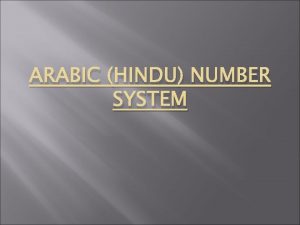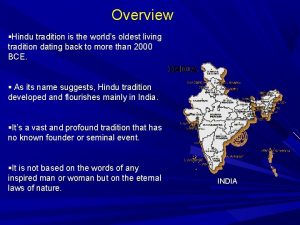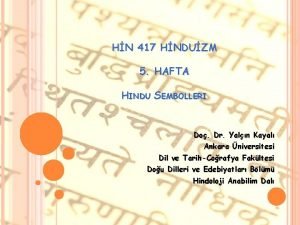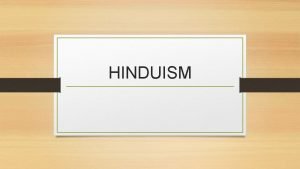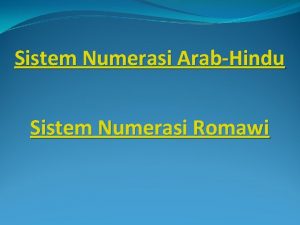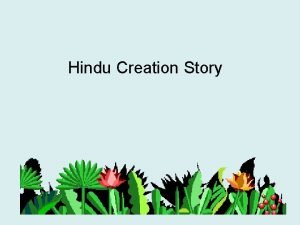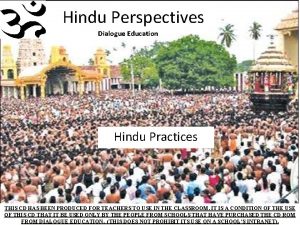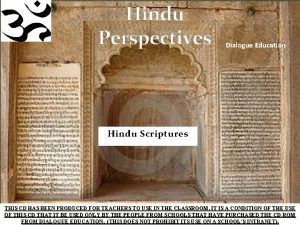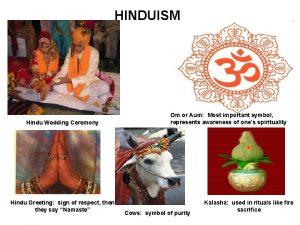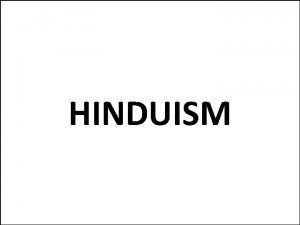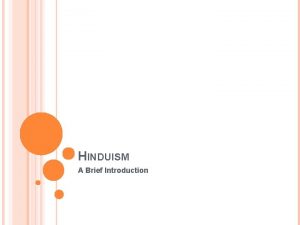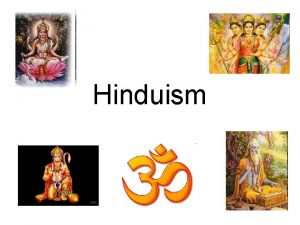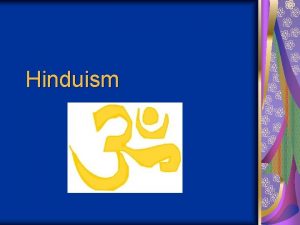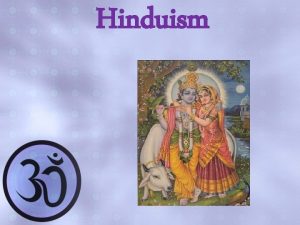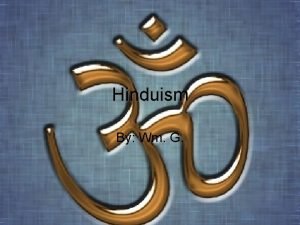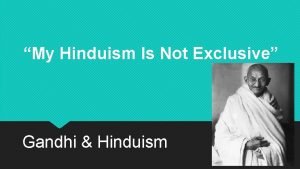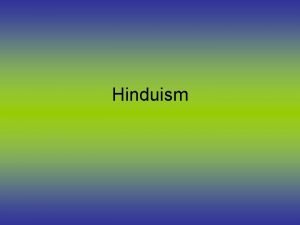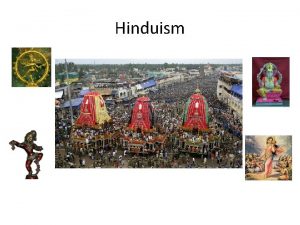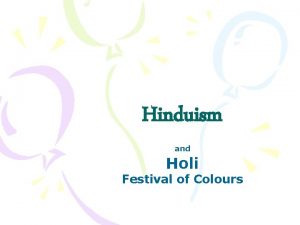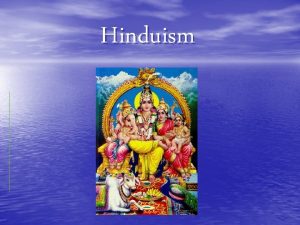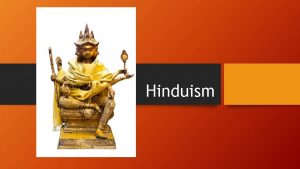HINDU PERSPECTIVES Dialogue Education Introduction to Hinduism THIS
































- Slides: 32

HINDU PERSPECTIVES Dialogue Education Introduction to Hinduism THIS CD HAS BEEN PRODUCED FOR TEACHERS TO USE IN THE CLASSROOM. IT IS A CONDITION OF THE USE OF THIS CD THAT IT BE USED ONLY BY THE PEOPLE FROM SCHOOLS THAT HAVE PURCHASED THE CD ROM FROM DIALOGUE EDUCATION. (THIS DOES NOT PROHIBIT ITS USE ON A SCHOOL’S INTRANET).

Documentary - You Tube Religions of the World --Hinduism (1 of 5) (50 minutes) Click on the image to the left. You will need to be connected to the internet to view this presentation. Enlarge to full screen.

GAMES Click on one of the images above for a game of “Fling the Teacher”, “Penalty Shootout” or “Hoop-shoot”. Try playing a game with your students at the start and the end of the unit. Make sure you have started the slide show and are connected to the internet. 3

Introduction to Hinduism is the predominant and indigenous religious tradition of the Indian Subcontinent.

Introduction to Hinduism Among other practices and philosophies, Hinduism includes a wide spectrum of laws and prescriptions of "daily morality" based on the notion of karma, dharma, and societal norms.

Introduction to Hinduism is formed of diverse traditions and has no single founder.

Introduction to Hinduism A large body of texts is classified as Hindu, divided into Śruti ("revealed") and Smriti ("remembered") texts.

Introduction to Hinduism The word Hindu is derived from the Sanskrit word Sindhu, the historic local appellation for the Indus River in the northwestern part of the Indian subcontinent.

Introduction to Hinduism The word Hindu was first used by Arab invaders and then went further west by the Arabic term al. Hind referring to the land of the people who live across river Indus.

Introduction to Hinduism About Dharma The concept of a "power" that is held to lie behind nature and that keeps everything in balance became a natural forerunner to the idea of Dharma.

Introduction to Hinduism About Dharma The transition of the rta to the modern idea of dharma occurs in the Brihadaranyaka Upanishad.

Introduction to Hinduism In the Mahabharata, Krishna defines dharma as, "Dhāranād dharma ityāhur dharmena vidhrtāh prajāh, Yat syād dhārana sanyuktam sa dharma iti nishchayah" i. e. , Dharma upholds both this-worldly and otherworldly affairs.

Introduction to Hinduism as it is commonly known can be subdivided into a number of major currents.

Introduction to Hinduism Of the historical division into six darshanas, only two schools, Vedanta and Yoga, survive. The main divisions of Hinduism today are Vaishnavism, Shaivism, Smartism and Shaktism.

Introduction to Hinduism Mc. Daniel (2007) distinguishes six generic "types" of Hinduism, in an attempt to accommodate a variety of views on a rather complex subject: * Folk Hinduism, * Śrauta or "Vedic" * Vedantic Hinduism * Yogic Hinduism * "Dharmic" Hinduism or "daily morality" * Bhakti or devotionalist practices

Introduction to Hinduism does not have a "unified system of belief encoded in declaration of faith or a creed", but is rather an umbrella term comprising the plurality of religious phenomena originating and based on the Vedic traditions.

Introduction to Hinduism The characteristic of comprehensive tolerance to differences in belief, and Hinduism's openness, makes it difficult to define as a religion according to traditional Western conceptions.

Introduction to Hinduism Most Hindu traditions revere a body of religious or sacred literature, the Vedas, although there are exceptions.

Introduction to Hinduism A definition of Hinduism, given by the first Vice President of India, who was also a prominent theologian, Sarvepalli Radhakrishnan, states that Hinduism is not "just a faith", but in itself is related to the union of reason and intuition.

Introduction to Hinduism Problems with the single definition of what is actually meant by the term 'Hinduism' are often attributed to the fact that Hinduism does not have a single or common historical founder.

Introduction to Hinduism is a major religion in India and according to 2001 census, Hinduism was followed by around 80% of population in India.

Introduction to Hinduism Demographical ly, Hinduism is the world's third largest religion, after Christianity and Islam.

Introduction to Hinduism Monasticism Some Hindus choose to live a monastic life (Sannyāsa) in pursuit of liberation or another form of spiritual perfection.

Introduction to Hinduism Varnas Hindu society has traditionally been categorized into four classes, called Varnas (Sanskrit: "colour, form, appearance"): [88] * the Brahmins: teachers and priests; * the Kshatriyas: warriors, nobles, and kings; * the Vaishyas: farmers, merchants, and businessmen; and * the Shudras: servants and labourers.

Introduction to Hinduism Hindus and scholars debate whether the socalled caste system is an integral part of Hinduism sanctioned by the scriptures or an outdated social custom.

Introduction to Hinduism Many social reformers, including Mahatma Gandhi and B. R. Ambedkar, criticized caste discrimination.

Introduction to Hinduism Hindus advocate the practice of ahiṃsā (non-violence) and respect for all life because divinity is believed to permeate all beings, including plants and nonhuman animals.

Introduction to Hinduism In accordance with ahiṃsā, many Hindus embrace vegetarianism to respect higher forms of life.

Introduction to Hinduism There are many Hindu groups that have continued to abide by a strict vegetarian diet in modern times.

Introduction to Hinduism Vegetarianism is propagated by the Yajur Veda and it is recommended for a satvic (purifying) lifestyle.

Bibliography # Banerji, S. C. (1992), Tantra in Bengal (Second Revised and Enlarged ed. ), Delhi: Manohar, ISBN 81 -85425 -63 -9 # Basham, A. L (1999), A Cultural History of India, Oxford University Press, ISBN 0 -19 -563921 -9 # Bhaktivedanta, A. C. (1997), Bhagavad-Gita As It Is, Bhaktivedanta Book Trust, ISBN 089213285 X, http: //bhagavadgitaasitis. com/, retrieved 2007 -07 -14 # Bhaskarananda, Swami (1994), The Essentials of Hinduism: a comprehensive overview of the world's oldest religion, Seattle, WA: Viveka Press, ISBN 1 -884852 -02 -5 [unreliable source? ] # Bhattacharyya, N. N (1999), History of the Tantric Religion (Second Revised ed. ), Delhi: Manohar Publications, ISBN 81 -7304 -025 -7 # Chidbhavananda, Swami (1997), The Bhagavad Gita, Sri Ramakrishna Tapovanam # Eliot, Sir Charles (2003), Hinduism and Buddhism: An Historical Sketch, I (Reprint ed. ), Munshiram Manoharlal, ISBN 8121510937 # Fuller, C. J. (2004), The Camphor Flame: Popular Hinduism and Society in India, Princeton, NJ: Princeton University Press, ISBN 9780691120485 # Growse, Frederic Salmon (1996), Mathura - A District Memoir (Reprint ed. ), Asian Educational Services # Garces-Foley, Katherine (2005), Death and religion in a changing world, M. E. Sharpe # Guénon, René (1921), Introduction to the Study of the Hindu Doctrines (1921 ed. ), Sophia Perennis, ISBN 0900588 -74 -8 # Guénon, René, Studies in Hinduism (1966 ed. ), Sophia Perennis, ISBN 0 -900588 -69 -3 # Guénon, René, Man and His Becoming According to the Vedanta (1925 ed. ), Sophia Perennis, ISBN 0 -90058862 -4

Bibliography # Radhakrishnan, S (Trans. ) (1995), Bhagvada Gita, Harper Collins, ISBN 1 -855384 -57 -4 # Radhakrishnan, S (1996), Indian Philosophy, 1, Oxford University Press, ISBN 0195638204 # Richman, Paula (1988), Women, branch stories, and religious rhetoric in a Tamil Buddhist text, Buffalo, NY: Maxwell School of Citizenship and Public Affairs, Syracuse University, ISBN 0915984903 # Sargeant, Winthrop; Chapple, Christopher (1984), The Bhagavad Gita, New York: State University of New York Press, ISBN 0 -87395 -831 -4 # Sen Gupta, Anima (1986), The Evolution of the Sāṃkhya School of Thought, South Asia Books, ISBN 8121500192 # Silverberg, James (1969), "Social Mobility in the Caste System in India: An Interdisciplinary Symposium", The American Journal of Sociology 75 (3): 442– 443, doi: 10. 1086/224812 # Smelser, N. ; Lipset, S. , eds. (2005), Social Structure and Mobility in Economic Development, Aldine Transaction, ISBN 0202307999 # Smith, Huston (1991), The World's Religions: Our Great Wisdom Traditions, San Francisco: Harper. San. Francisco, ISBN 0062507990 # Vasu, Srisa Chandra (1919), The Catechism Of Hindu Dharma, New York: Kessinger Publishing, LLC # Vivekananda, Swami (1987), Complete Works of Swami Vivekananda, Calcutta: Advaita Ashrama, ISBN 81 -85301 -75 -1 # Walker, Benjamin (1968), The Hindu world: an encyclopedic survey of Hinduism, Praeger Wikipedia- hinduism- http: //en. wikipedia. org/wiki/Hinduism
 Congrats dialogue
Congrats dialogue Hindu philosophy of education
Hindu philosophy of education Technical education dialogue
Technical education dialogue Technical education dialogue
Technical education dialogue Disadvantages of hindu-arabic number system
Disadvantages of hindu-arabic number system Hindu theatre
Hindu theatre World of
World of Power full caste in india
Power full caste in india Adat bersanding pengaruh hindu
Adat bersanding pengaruh hindu Etika agama hindu
Etika agama hindu Empat fase perkembangan agama hindu di india,
Empat fase perkembangan agama hindu di india, Hindu reincarnation chart
Hindu reincarnation chart Periodo de la literatura hindú que el contenido es profano
Periodo de la literatura hindú que el contenido es profano Roman letter
Roman letter Hindu shrine labeled
Hindu shrine labeled Hindu temple tempe
Hindu temple tempe Hindu beliefs
Hindu beliefs Ashtangika marga
Ashtangika marga Sapratibandha
Sapratibandha Kitab suci agama budha adalah . . . *
Kitab suci agama budha adalah . . . * Lc in arabic numerals
Lc in arabic numerals What is karma marga
What is karma marga The hindu
The hindu Pedagang penguasa dan pujangga pada masa klasik hindu budha
Pedagang penguasa dan pujangga pada masa klasik hindu budha Varnashrama system
Varnashrama system Wilayah kekuasaan kutai
Wilayah kekuasaan kutai Hindu sembolleri
Hindu sembolleri Hindu triumvirate
Hindu triumvirate Merits and demerits of joint stock company
Merits and demerits of joint stock company Agama dan kepercayaan masyarakat kerajaan alam melayu
Agama dan kepercayaan masyarakat kerajaan alam melayu Kekurangan dan kelebihan dari sistem numerasi romawi
Kekurangan dan kelebihan dari sistem numerasi romawi Hindu temple augusta
Hindu temple augusta Nonearth cup
Nonearth cup







